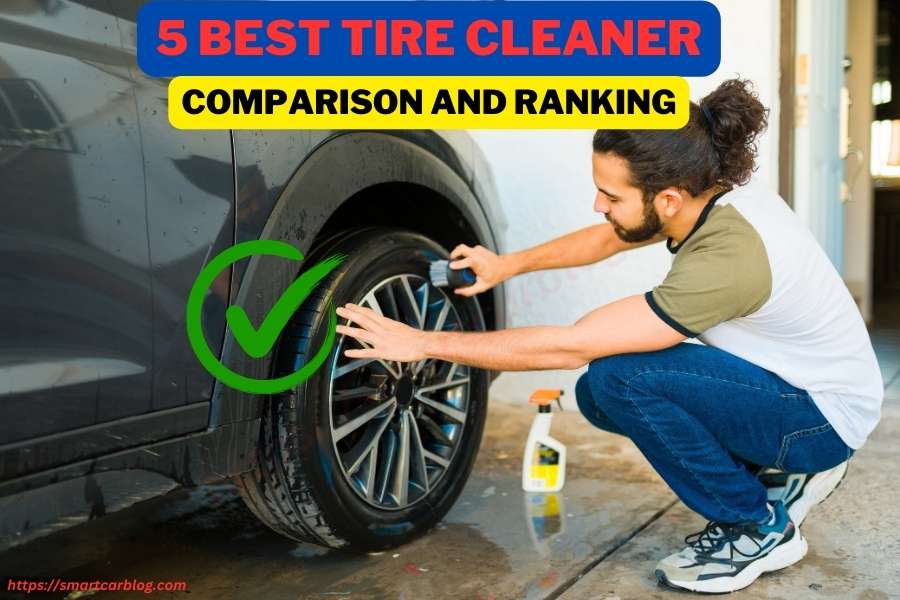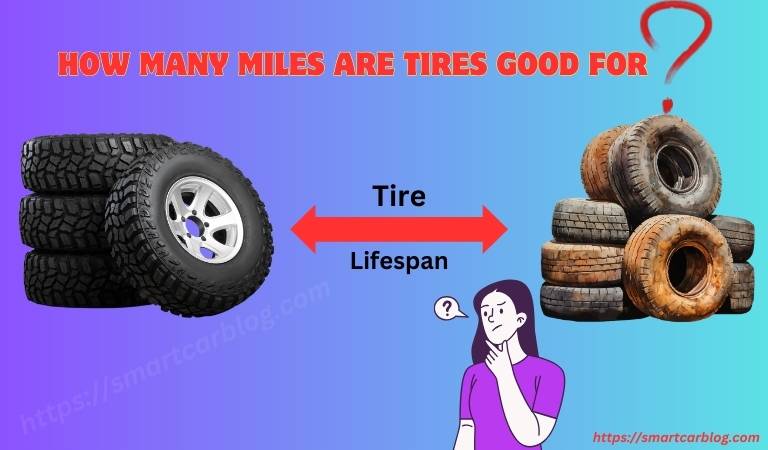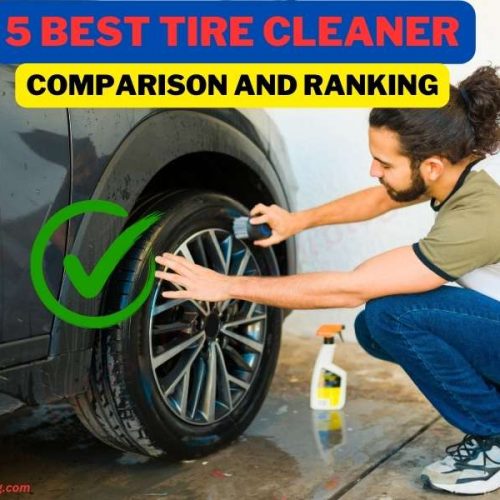Tires, the silent companions of our journeys, are often overlooked until the day they demand our attention. As drivers, we rely on them to grip the asphalt, withstand various terrains, and keep us safe through countless miles. Yet, the question lingers: “How many miles are tires good for?” It’s not a simple inquiry but a gateway to a world of understanding about vehicular longevity, safety, and wise budgeting.
In this exploration, we dive into the depths of tire durability, unraveling the mysteries behind their mileage potential. This isn’t just a guide for car enthusiasts; it’s a roadmap for every individual who takes the wheel, empowering you with the knowledge to make informed decisions about your vehicle’s most vital component.
Join us on this odyssey, where we decipher the factors influencing tire longevity, discover the diverse lifespan across tire types, and unravel the significance of manufacturer ratings. Whether you’re a commuter navigating city streets or an adventurer traversing off-road paths, understanding the lifespan of your tires is paramount.
Buckle up as we embark on a journey to unveil the secrets behind how many miles tires are truly good for, ensuring you drive not only with curiosity but with confidence on the roads ahead.
Table of Contents
ToggleUnderstanding the Importance of Tire Maintenance
Regular tire maintenance goes beyond merely ensuring you pass annual vehicle inspections; it plays a vital role in your car’s overall health. Proper tire care can dramatically extend your tire’s lifespan, improve gas mileage, and make your vehicle much safer to operate. Effective tire maintenance includes:
- Regular tire rotations.
- Keeping an eye on tread depth.
- Maintaining the right tire pressure.
Ignoring these aspects could lead to inefficient fuel use, decreased safety, and, ultimately, a shorter lifespan for your tires.
Factors that Influence Tire Lifespan
The lifespan of your tires depends on a myriad of elements, including but not limited to:
- Driving habits: Aggressive driving, such as quick starts and stops, can wear out your tires faster.
- Road Conditions: Potholes, uneven road surfaces, and even climate can affect how long your tires last.
- Tire Type: High-performance tires may offer better handling but often come with a shorter lifespan.
- Maintenance: As mentioned earlier, consistent and appropriate maintenance can extend the life of your tires.
So, when you ask, “How many miles are tires good for?” consider these factors for a more accurate and personalized answer. Your attention to tire maintenance and understanding of influencing factors can save you both time and money in the long run.
By following these guidelines, you’re not just extending the life of your tires but also ensuring a safer and more efficient driving experience.
How Many Miles Are Tires Good For?
When it comes to the longevity of your tires, the question on every driver’s mind is, “How many miles are tires good for?” Understanding the lifespan of your tires is crucial for safety and budgeting.
In this comprehensive guide, we’ll delve into the intricacies of tire durability, exploring the average lifespan of tires in miles and how it varies across different types.
Average Lifespan of Tires in Miles
Tires, the unsung heroes of the road, have a lifespan that depends on various factors. On average, tires are good for around 50,000 miles. However, this number can vary significantly based on driving habits, road conditions, and maintenance.
Regular check-ups, proper inflation, and alignment play vital roles in extending tire life. By understanding these aspects, you can ensure your tires stay roadworthy for longer, saving you money in the long run.
Variation in Lifespan Based on Tire Types
Tire longevity isn’t a one-size-fits-all scenario. Different types of tires offer distinct lifespans tailored to specific driving conditions.
All-Season Tires: All-season tires, designed for versatility, generally last between 50,000 to 70,000 miles. Their durable rubber compounds and versatile tread patterns make them suitable for various climates, ensuring a decent lifespan for everyday driving.
Performance Tires: Performance enthusiasts often opt for high-performance tires engineered for superior grip and handling. However, their softer rubber composition means they have a slightly shorter lifespan, ranging from 40,000 to 50,000 miles. Regular rotation and careful driving can maximize their mileage potential.
Winter Tires: Winter tires, crafted to tackle icy and snowy conditions, usually last between 25,000 to 35,000 miles. Their specialized rubber compounds and aggressive treads provide excellent traction in harsh winter weather, albeit with a shorter lifespan due to their unique design.
Manufacturer’s Mileage Ratings and What They Mean
Manufacturers provide mileage ratings indicating the expected lifespan of their tires. Understanding these ratings is vital when purchasing new tires. For instance, a tire with a 60,000-mile rating implies it’s designed to perform optimally within this range.
However, real-world factors can influence this number. Regular maintenance and cautious driving habits can help you achieve or even exceed the manufacturer’s mileage ratings.
By exploring these aspects, you’ll gain valuable insights into how many miles tires are good for and learn essential tips to maximize their lifespan. Stay tuned for expert advice on tire maintenance, driving habits, and choosing the right tires for your specific needs. Your journey to tire longevity starts here!
Influencing Factors on Tire Lifespan
The question of “How many miles are tires good for?” is not easy to answer without considering multiple influencing factors.
From your driving habits to the type of roads you drive on, numerous elements play a role in how long your tires will last. Let’s take a closer look at some of these variables.
Driving Habits and Their Impact on Tire Life
Your driving style has a significant influence on your tire’s longevity. For instance, rapid acceleration and hard braking can lead to faster tire wear. Smooth driving, on the other hand, not only extends your tire’s life but also improves your vehicle’s fuel efficiency. Therefore, being mindful of your driving habits can prolong the life of your tires considerably.
The Effect of Road Conditions on Tire Wear
Road conditions are another critical factor that can alter the lifespan of your tires. Potholes, sharp objects, and even speed bumps can cause immediate damage or slowly wear down your tires over time. The quality of the roads you typically drive on should be a consideration when pondering the question, “How many miles are tires good for?”
Climate and Its Impact on Tire Durability
Climate can also affect your tire’s durability significantly. Hot climates can cause the rubber to soften and wear out quickly, while cold climates can make the rubber hard and more prone to cracking. Seasonal tire changes may be necessary if you live in areas with extreme weather conditions to maximize tire lifespan.
Vehicle Type and Its Role in Tire Wear
The type of vehicle you drive also plays a crucial role in tire wear. Trucks and SUVs, which are generally heavier, may cause quicker tire wear compared to lighter vehicles like sedans or hatchbacks. Make sure to consult your vehicle’s manufacturer guidelines for specific tire recommendations based on vehicle type.
In summary, multiple factors influence the answer to the question, “How many miles are tires good for?” By understanding these variables, you can take steps to extend your tire’s lifespan, ensuring a safer and more efficient driving experience.
Signs Your Tires Might Need Replacing
Keeping an eye out for signs indicating your tires need replacing is crucial for your safety and optimal vehicle performance. Let’s explore the key indicators that signal it’s time for new tires.
Tread Wear Indicators to Look For
Tire tread depth is a vital factor in maintaining traction and handling. One of the most common signs your tires need replacing is worn-out tread. To check the tread depth, look for tread wear indicators, also known as wear bars, which are small rubber bridges between the treads.
When the tread wears down to the level of these indicators (usually at 2/32 of an inch), it’s a clear indication that your tires are no longer safe for use. Regularly inspect your tire treads for these indicators, especially in the center and on the edges, as uneven wear can occur due to alignment issues.
Recognizing Abnormal Tire Wear Patterns
Abnormal wear patterns can also signify issues that may require immediate attention. These could be due to improper alignment, unbalanced tires, or even suspension problems. Some wear patterns to look out for include:
- Uneven wear on one side of the tire
- Center wear, which could be due to over-inflation
- Edgewear, often caused by under-inflation
Age-Related Tire Degradation
Even if the tread looks fine, tires degrade over time due to factors like exposure to sunlight and heat. Most manufacturers recommend replacing tires every six years, regardless of the tread condition. Check the tire’s manufacturing date (usually printed on the sidewall) to determine its age.
Extending Your Tire’s Lifespan
So you’ve asked, “How many miles are tires good for?” and learned about the signs that indicate a need for replacement. The next logical step is to understand how to extend your tire’s lifespan. Proactive maintenance and informed choices can go a long way in getting the most mileage out of your tires. Let’s explore some strategies.
Importance of Regular Tire Rotations
One of the most effective ways to extend your tire’s life is regular tire rotation. This process helps in evening out the wear on all tires, as each position on the vehicle exposes the tire to different stresses. Most experts recommend rotating your tires every 6,000 to 8,000 miles, although it’s best to consult your vehicle’s manual for specific guidance.
Correct Tire Inflation and Its Role in Longevity
Maintaining the correct tire pressure is one of the simplest yet most effective ways to extend your tire’s lifespan. Underinflated or overinflated tires wear out faster and unevenly. Regularly check your tire pressure with a tire pressure monitor system(TPMS) or use a reliable gauge and inflate it to the recommended level specified in your vehicle’s manual or on the driver’s side door jamb. Properly inflated tires not only last longer but also improve fuel efficiency and enhance your vehicle’s handling and safety.
The Impact of Regular Vehicle Maintenance on Tire Life
Proper vehicle maintenance directly correlates with tire longevity. Regularly scheduled maintenance, such as wheel alignments, balancing, and suspension checks, ensures that your tires wear evenly.
Misaligned wheels and imbalanced tires can lead to premature wear and reduced lifespan. By following the manufacturer’s maintenance schedule and addressing issues promptly, you enhance your tire’s durability and contribute to a safer driving experience.
Choosing High-Quality Tires for Longer Lifespan
Investing in high-quality tires from reputable brands is a proactive step towards ensuring a longer lifespan for your tires. Quality tires are engineered with durable materials and advanced tread designs that resist wear and provide better traction.
When selecting tires, consider your driving needs and preferences. All-season or performance tires, specifically designed for your vehicle type, can significantly impact their longevity. While high-quality tires may require a larger initial investment, their extended lifespan and enhanced performance make them a cost-effective choice in the long run.
By adhering to regular tire rotations, maintaining correct tire inflation, prioritizing vehicle maintenance, and choosing high-quality tires, you can significantly extend the lifespan of your tires. These proactive measures not only save you money but also enhance your driving safety and comfort. Stay tuned for more expert tips on tire care and maintenance, guiding you toward a longer, smoother, and safer ride on the road.
The Cost of Ignoring Tire Wear
While understanding “How many miles are tires good for?” is crucial, knowing the costs associated with ignoring tire wear can be an eye-opener. Failing to address worn-out or damaged tires not only puts your safety at risk but also impacts your vehicle’s performance and can lead to additional costs. Here’s a breakdown of what you might encounter.
Safety Risks Associated With Worn-Out Tires
Worn-out tires pose a significant safety hazard. The reduced tread depth can lead to poor road grip, increasing the risk of hydroplaning in wet conditions. In addition, tires that are worn out are more susceptible to punctures and blowouts, which can result in dangerous situations,
particularly when driving at high speeds. Ignoring these safety signals can lead to accidents, making it crucial to address tire wear promptly.
Fuel Efficiency Loss Due to Old Tires
Another cost of ignoring tire wear is the loss of fuel efficiency. Worn-out or under-inflated tires create more rolling resistance, requiring your engine to work harder and thus consume more fuel. This can significantly increase your fuel costs over time.
Therefore, keeping your tires in optimal condition is not just a safety measure but also an economic one.
Increased Vehicle Damage Potential
Worn-out tires can also lead to other forms of vehicle damage. For instance, poor tire conditions can strain the suspension and braking systems, leading to quicker wear and potential failures in these essential components. The cost of repairing or replacing these systems can be substantially higher than the cost of new tires, making it financially prudent to address tire issues early on.
In summary, ignoring the signs of tire wear can have far-reaching implications beyond just the question of “How many miles are tires good for?” From safety risks to economic costs, the consequences can be severe. Therefore, regular tire maintenance and timely replacements are investments in both your safety and your vehicle’s long-term performance.
Last Verdict: How many miles are tires good for?
The question, “How many miles are tires good for?” isn’t answered with a simple number. The lifespan of your tires depends on a myriad of factors, such as tire type, driving habits, road conditions, and even the climate. Proactive maintenance can significantly extend this lifespan while neglecting your tires can lead to increased risks and costs.
We’ve discussed how to spot signs that your tires need replacing, the importance of regular rotations, maintaining proper tire pressure, and choosing quality tires for longevity. Ignoring these best practices can lead to safety hazards, reduced fuel efficiency, and even further vehicle damage.
In summary, your tire’s mileage isn’t just a matter of how many miles they can rack up. It’s also about how well they can perform those miles, keeping you safe and your vehicle efficient. Regular inspections and maintenance are crucial. So, while there might not be a one-size-fits-all answer to “How many miles are tires good for?” Taking a proactive approach can help ensure that the miles you do get are safe and efficient.
FAQ ABOUT How many miles are tires good for?
Q: How long do tires last on average?
A: On average, tires last between 25,000 and 50,000 miles. However, this can vary significantly based on driving habits, road conditions, and tire maintenance practices.
Q: At what mileage should tires be replaced?
A: Generally, you should consider replacing your tires when they reach between 25,000 and 50,000 miles. Some high-quality tires might exceed this range, but it’s essential to monitor tire condition regularly.
Q: Can tires last 100,000 miles?
A: While some manufacturers claim their tires can last 100,000 miles, it’s generally unrealistic for most drivers. Factors like road conditions, driving habits, and tire maintenance can greatly affect lifespan, making it unlikely for most tires to reach this mileage.
Q: Do tires expire if not used?
A: Yes, tires do have a shelf life, typically around six years, even if they are not used. Rubber compounds degrade over time, leading to reduced performance and increased safety risks.
Q: How do you know if your tires are bad?
A: Signs of bad tires include visible tread wear indicators, abnormal wear patterns, and cracks in the sidewall. If you notice any of these signs, it’s likely time to replace your tires.
Q: How can I extend the mileage of my tires?
A: Regular tire rotations and maintaining proper tire pressure are two effective ways to prolong your tire’s lifespan.
Q: What are the risks of using worn-out tires?
A: Worn-out tires increase your risk of blowouts, punctures, and poor road grip, making driving hazardous.
Q: How does tire inflation affect mileage?
A: Proper tire inflation minimizes rolling resistance, enhancing fuel efficiency and extending your tire’s mileage.
Q: Are there tire types that last longer than others?
A: Yes, all-season tires generally have a longer lifespan compared to performance or winter tires.
Q: What are tread wear indicators, and how do they work?
A: Tread wear indicators are built-in markers on your tires that become visible as the tires wear down, signaling when it’s time for a replacement.
Q: Can road conditions influence how many miles my tires are good for?
A: Absolutely; rough road conditions like gravel or potholes can accelerate tire wear, reducing their mileage.
Q: Does climate impact tire lifespan?
A: Yes, extreme temperatures can cause the rubber in tires to degrade faster, reducing how many miles they are good for.
Q: What role does vehicle alignment play in tire wear?
A: A misaligned vehicle can lead to uneven tire wear, which significantly shortens your tire’s lifespan.
Q: How does ignoring tire wear affect my fuel efficiency?
A: Ignoring tire wear leads to increased rolling resistance, causing your engine to work harder and reducing your vehicle’s fuel efficiency.




 Welcome to SmartCarBlog.com! I’m Rashel Miajee, The proud founder of smartcarblog.com. This is a part of
Welcome to SmartCarBlog.com! I’m Rashel Miajee, The proud founder of smartcarblog.com. This is a part of 


